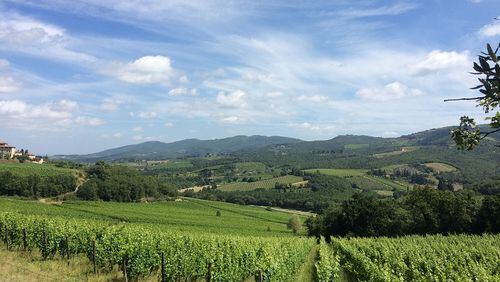While pricey Napa Valley wines dominated the top awards at the 2018 Winemaker Challenge International Wine Competition in San Diego at the end of January, other trends emerged, as they always do.
The Winemaker Challenge involves blind tastings, as all credible wine competitions do. Judges evaluate each wine without such vital information as producer or price. Blind tastings level the playing field and allow each wine to be judged on merits rather than reputation or price. Anything can happen, and it often does.
Yes, the wine of the year was a $95 cabernet sauvignon from the Napa Valley, but 16 of the 45 wines awarded platinum carried a price tag of $20 or less. A dozen wines with a retail price tag of $20 or less were deemed best in their class. The lesson, of course, is that price alone doesn't foreshadow the quality in the bottle.
Closer scrutiny of the best-of-class awards teaches us that good wine is being made all over the world. Napa may have dominated the best-of-show awards (best red, best white, best sparkling and best dessert), but 26 of the best-of-class awards went to wines that are neither from Napa nor Sonoma.
Virginia's Horton Vineyards was honored, for example, for its brilliant 2016 rkatsiteli, named best white wine from the eastern United States. It happened to be one of my favorite white wines from anywhere during the two-day competition. The Best of Show white, Cakebread Cellars' 2016 Chardonnay Reserve, was clearly the top wine presented, but it retails for $56. Contrast that with the Horton rkatsiteli at $15, which certainly belonged in the same league.
North Carolina's Jolo Winery 2016 Pilot Fog ($29) was named Best Native American Red (the grape is Norton) at $29. I might prefer the V. Sattui 2013 Morisoli Vineyard cabernet sauvignon, the wine of the year, but the far less expensive Norton from the obscure Yadkin River Valley of North Carolina could hold its own in just about any company.
There were other highlights that vividly illustrated location and price aren't the only factors to consider when evaluating wine for quality.
Villa Bellezza Winery of Pepin, Wisconsin, entered 15 wines -- all from the not-so-familiar Upper Mississippi Valley appellation -- and earned 10 awards of silver or better, four of them gold and three of them platinum. They ranged in price from $15 to $35.
E&J Gallo's Dark Horse winery, with grapes sourced mostly from California's Lodi region, earned a best-of-class award for its 2015 petite sirah for $10. The 2017 Whitehaven sauvignon blanc ($20), a Gallo import from Marlborough, New Zealand, also was best in its class. Gallo's Barefoot Cellars captured 27 medals (2 platinum, 10 gold) at prices ranging from $7 to $10. Overall, Gallo's collection of domestic wineries and imports collected more than 80 medals.
Berryessa Gap Vineyards, from California's Yolo County near Sacramento, proved itself a rising star. The winery entered five wines and took gold of better with four of them, including a best-in-class award for its 2015 Coble Ranch Vineyard malbec ($23).
Italy's Chianti region once again demonstrated that it is one of the world's finest area's for excellent red wine at a reasonable price. The Da Vinci 2015 Chianti DOCG ($15) and the Castello Banfi 2015 Chianti DOCG ($14.99) tied for best-in-class Chianti.
Cameron Hughes scored awards with six of the seven wines it entered. Four of those were gold, marking a huge triumph for value. The most expensive of the gold-medal wines was a $17 chardonnay from the Russian River Valley. The Cameron Hughes business model is a novel concept. Winemaker Cameron Hughes and his team scour the world for top-notch wineries that are willing to sell off their leftover wine each vintage in bulk. The catch is that the wineries involved wouldn't want consumers to see their wine selling at such low prices, so the source producer is never divulged. It's a great way to "drink up," as it were, at very modest prices.
Complete results, including best-of-show and best-in-class awards, can be found on the challenge website, WinemakerChallenge.com.
About the Author






